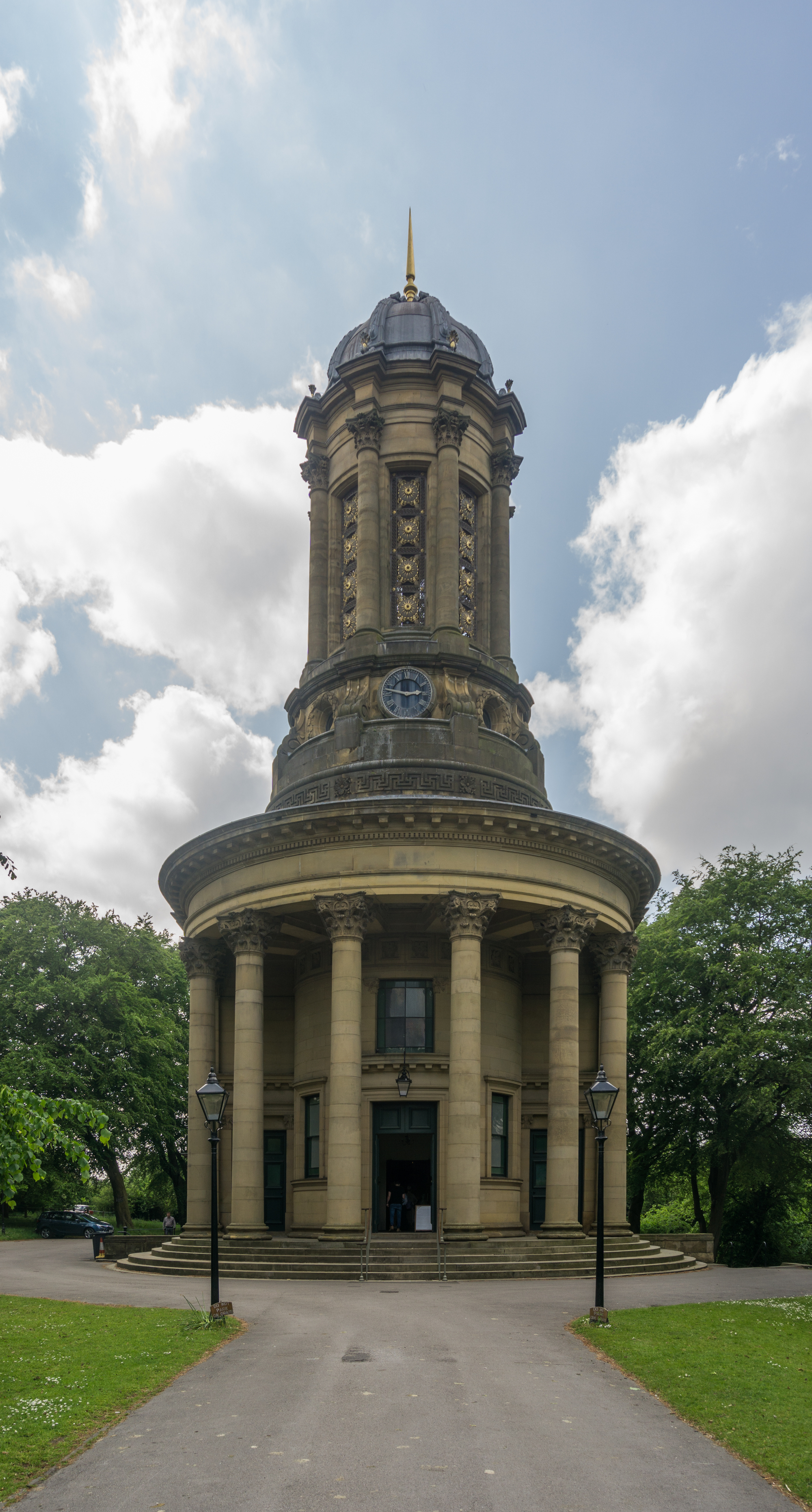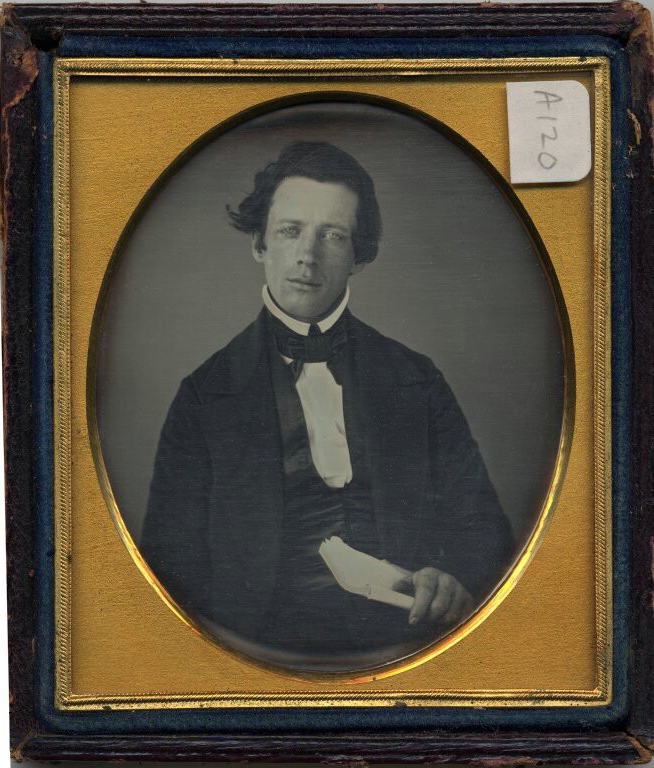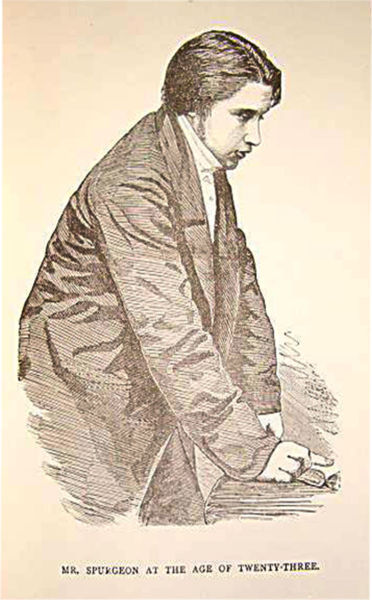|
Joseph Parker (theologian)
Joseph Parker (9 April 1830 – 28 November 1902) was an English Congregational minister. Life Born in Hexham, Northumberland, Parker was the son of Teasdale Parker, a stonemason, and Elizabeth (née Dodd). He managed to pick up a fair education, which afterwards he constantly supplemented. In the revolutionary years from 1845 to 1850 young Parker as a local preacher and temperance orator gained a reputation for vigorous utterance. He was influenced by Thomas Cooper, the Chartist, and Edward Miall, the Liberationist, and was much associated with Joseph Cowen, afterwards MP for Newcastle upon Tyne. At the time, he was wooing a local girl – Ann Nesbitt, daughter of William Nesbitt, a farmer of Horsley–on–Tyne. He referred to her as "Annie, the soul I loved, the girl that saved me, and made me a man". Horsley was about ten miles from Hexham, and he became acquainted with the Nesbitts through his preaching there, and Mr Nesbitt, a trustee and deacon of Horsley Congregational ... [...More Info...] [...Related Items...] OR: [Wikipedia] [Google] [Baidu] |
John Robert Seeley
Sir John Robert Seeley, KCMG (10 September 1834 – 13 January 1895) was an English Liberal historian and political essayist. A founder of British imperial history, he was a prominent advocate for the British Empire, promoting a concept of Greater Britain. This he expounded in his most widely known book ''The Expansion of England'' (1883). Whilst he was an early advocate of the establishment of political science as a distinct academic discipline, he retained a theological approach in which this was embedded. Early life Seeley was born in London. His father was Robert Benton Seeley, a publisher who issued books under the name of Seeley, Jackson and Halliday. He was a strong advocate of Evangelical Anglicanism and was the author of several religious books and of ''The Life and Times of Edward I''. His mother was Mary Ann Jackson (1809-1868), who shared her husband's religious views. Her brother, John Henry Jackson, was a partner in Robert Seeley's publishing company. John was r ... [...More Info...] [...Related Items...] OR: [Wikipedia] [Google] [Baidu] |
Alexander Maclaren
Alexander Maclaren (11 February 1826 – 5 May 1910) was a Scottish Baptist minister. Biography Maclaren was born in Glasgow, Scotland, the son of David Maclaren, a merchant and Baptist lay preacher.Edwin Charles Dargan (1912) ''A History of Preaching'', p. 572. His father went to Australia from 1837 to 1841 where he served as Resident Manager of the South Australian Company, leaving his family in Edinburgh. During his father's absence, Maclaren was converted and publicly baptized into the fellowship of the Hope St. Baptist Church, Glasgow, some time between age 11 and 13.John Edwards (1902) ''Nineteenth Century Preachers and their Methods'', p. 75. He was educated at the Glasgow High School and Glasgow University, and the family moved to London when his father returned from Australia. Maclaren entered Stepney College in 1842 at age 16, a Baptist institution in London. He was heavily influenced by Dr. David Davies, an eminent Hebrew scholar, and became an enthusiastic stud ... [...More Info...] [...Related Items...] OR: [Wikipedia] [Google] [Baidu] |
Reginald John Campbell
Reginald John Campbell (29 August 1867 – 1 March 1956) was a British Congregational church, Congregationalist and Anglicanism#Anglican divines, Anglican divine who became a popular preacher while the minister at the City Temple (London), City Temple and a leading exponent of 'The New Theology' movement of 1907. His last years were spent as a senior cleric in the Church of England. Early years Born at Bermondsey in London, the second of four sons and one daughter of John Campbell (born 1841), a United Methodist Free Churches, United Free Methodist minister of Scottish descent, and his wife, Mary Johnston, he was registered at birth as John Wesley Campbell, which name also appears on his first marriage certificate in 1889. A brother was the writer James Johnston Campbell. At a few months old Campbell went to live with his maternal grandparents, John Johnston and his wife, near Belfast in Northern Ireland because of his delicate health. Here, later, he was home tutored. After the ... [...More Info...] [...Related Items...] OR: [Wikipedia] [Google] [Baidu] |
Methodism
Methodism, also called the Methodist movement, is a group of historically related denominations of Protestant Christianity whose origins, doctrine and practice derive from the life and teachings of John Wesley. George Whitefield and John's brother Charles Wesley were also significant early leaders in the movement. They were named ''Methodists'' for "the methodical way in which they carried out their Christian faith". Methodism originated as a revival movement within the 18th-century Church of England and became a separate denomination after Wesley's death. The movement spread throughout the British Empire, the United States, and beyond because of vigorous missionary work, today claiming approximately 80 million adherents worldwide. Wesleyan theology, which is upheld by the Methodist churches, focuses on sanctification and the transforming effect of faith on the character of a Christian. Distinguishing doctrines include the new birth, assurance, imparted righteousness, ... [...More Info...] [...Related Items...] OR: [Wikipedia] [Google] [Baidu] |
United Reformed Church
The United Reformed Church (URC) is a Protestant Christian church in the United Kingdom. As of 2022 it has approximately 40,000 members in 1,284 congregations with 334 stipendiary ministers. Origins and history The United Reformed Church resulted from the 1972 union of the Presbyterian Church of England and the Congregational Church in England and Wales. In introducing the United Reformed Church Bill in the House of Commons on 21 June 1972, Alexander Lyon called it "one of the most historic measures in the history of the Christian churches in this country". About a quarter of English Congregational churches chose not to join the new denomination; in England, there are three main groups of continuing Congregationalists: the Congregational Federation, the Evangelical Fellowship of Congregational Churches and the Fellowship of Independent Evangelical Churches. The URC subsequently united with the Re-formed Association of Churches of Christ in 1981 and the Congregational Union of S ... [...More Info...] [...Related Items...] OR: [Wikipedia] [Google] [Baidu] |
Crowborough
Crowborough is a town and civil parish in East Sussex, England, in the Weald at the edge of Ashdown Forest in the High Weald Area of Outstanding Natural Beauty, 7 miles (11 km) south-west of Royal Tunbridge Wells and 33 miles (53 km) south of London. It had a population 20,607 at the 2011 Census. History Various derivations for the town's name have been put forward. Early local documents give the names Crohbergh, Crowbergh, Croweborowghe, Crowbarrow and Crowboro. ''Croh'' in Old English meant saffron or golden-yellow colour, and ''berg'' meant hill. Gorse grows in profusion in the Crowborough Beacon area, and its yellow flowers might well have contributed to the meaning. In 1734, Sir Henry Fermor, a local benefactor, bequeathed money for a church and charity school for the benefit of the "very ignorant and heathenish people" that lived in the part of Rotherfield "in or near a place called Crowborough and Ashdown Forest". The church, dedicated to All Saints ... [...More Info...] [...Related Items...] OR: [Wikipedia] [Google] [Baidu] |
West Hampstead Cemetery
Hampstead Cemetery is a historic cemetery in West Hampstead, London, located at the upper extremity of the NW6 district. Despite the name, the cemetery is three-quarters of a mile from Hampstead Village, and bears a different postcode. It is jointly managed by Islington and Camden Cemetery Service and opens seven days a week, with closing times varying throughout the year. Location and history Hampstead Cemetery is situated on Fortune Green Road and is bordered on the northern side by the sports ground of University College School. A public footpath running from Hocroft Road to Fortune Green runs through the cemetery, effectively splitting it in two. Hampstead Cemetery was consecrated by the Bishop of London and opened in November 1876. The entire site covers , and an estimated 60,000 people are buried there. While there are no new grave spaces available, there is an area for cremated remains to the north of the cemetery, by the Fortune Green Road exit. The cemetery has a p ... [...More Info...] [...Related Items...] OR: [Wikipedia] [Google] [Baidu] |
Sunderland, Tyne And Wear
Sunderland () is a port city in Tyne and Wear, England. It is the City of Sunderland's administrative centre and in the historic county of Durham. The city is from Newcastle-upon-Tyne and is on the River Wear's mouth to the North Sea. The river also flows through Durham roughly south-west of Sunderland City Centre. It is the only other city in the county and the second largest settlement in the North East after Newcastle upon Tyne. Locals from the city are sometimes known as Mackems. The term originated as recently as the early 1980s; its use and acceptance by residents, particularly among the older generations, is not universal. At one time, ships built on the Wear were called "Jamies", in contrast with those from the Tyne, which were known as "Geordies", although in the case of "Jamie" it is not known whether this was ever extended to people. There were three original settlements by the River's mouth which are part of the modern-day city: Monkwearmouth, settled in 674 ... [...More Info...] [...Related Items...] OR: [Wikipedia] [Google] [Baidu] |
Henry Ward Beecher
Henry Ward Beecher (June 24, 1813 – March 8, 1887) was an American Congregationalist clergyman, social reformer, and speaker, known for his support of the Abolitionism, abolition of slavery, his emphasis on God's love, and his 1875 adultery trial. His rhetorical focus on Christ's love has influenced mainstream Christianity to this day. Beecher was the son of Lyman Beecher, a Calvinist minister who became one of the best-known Evangelism, evangelists of his era. Several of his brothers and sisters became well-known educators and activists, most notably Harriet Beecher Stowe, who achieved worldwide fame with her abolitionist novel ''Uncle Tom's Cabin''. Henry Ward Beecher graduated from Amherst College in 1834 and Lane Theological Seminary in 1837 before serving as a minister in Indianapolis and Lawrenceburg, Indiana. In 1847, Beecher became the first pastor of the Plymouth Church (Brooklyn, New York), Plymouth Church in Brooklyn, New York. He soon acquired fame on the lecture ... [...More Info...] [...Related Items...] OR: [Wikipedia] [Google] [Baidu] |
Charles Spurgeon
Charles Haddon Spurgeon (19 June 1834 – 31 January 1892) was an English Particular Baptist preacher. Spurgeon remains highly influential among Christians of various denominations, among whom he is known as the "Prince of Preachers". He was a strong figure in the Reformed Baptist tradition, defending the 1689 London Baptist Confession of Faith, and opposing the liberal and pragmatic theological tendencies in the Church of his day. Spurgeon was pastor of the congregation of the New Park Street Chapel (later the Metropolitan Tabernacle) in London for 38 years. He was part of several controversies with the Baptist Union of Great Britain and later he left the denomination over doctrinal convictions. While at the Metropolitan Tabernacle he built an Almshouse, the Stockwell Orphanage and encouraged his congregation to engage actively with the poor of Victorian London. He also founded Spurgeon's College, which was named after him posthumously. Spurgeon authored sermons, an auto ... [...More Info...] [...Related Items...] OR: [Wikipedia] [Google] [Baidu] |
Holborn Viaduct
Holborn Viaduct is a road bridge in London and the name of the street which crosses it (which forms part of the A40 route). It links Holborn, via Holborn Circus, with Newgate Street, in the City of London financial district, passing over Farringdon Street and the subterranean River Fleet. The viaduct spans the steep-sided Holborn Hill and the River Fleet valley at a length of and wide. City surveyor William Haywood was the architect and the engineer was Rowland Mason Ordish. History Holborn Viaduct was built between 1863 and 1869, as a part of the Holborn Valley Improvements, which included a public works scheme which, at a cost of over £2.5 million (over £ in ), improved access into the City from the West End, with better traffic flow and distribution around the new Holborn Circus, the creation of Queen Victoria Street, the rebuilding of Blackfriars Bridge, the opening of the Embankment section into the City, the continuation of Farringdon Street as Farringdon Roa ... [...More Info...] [...Related Items...] OR: [Wikipedia] [Google] [Baidu] |



.jpg)





